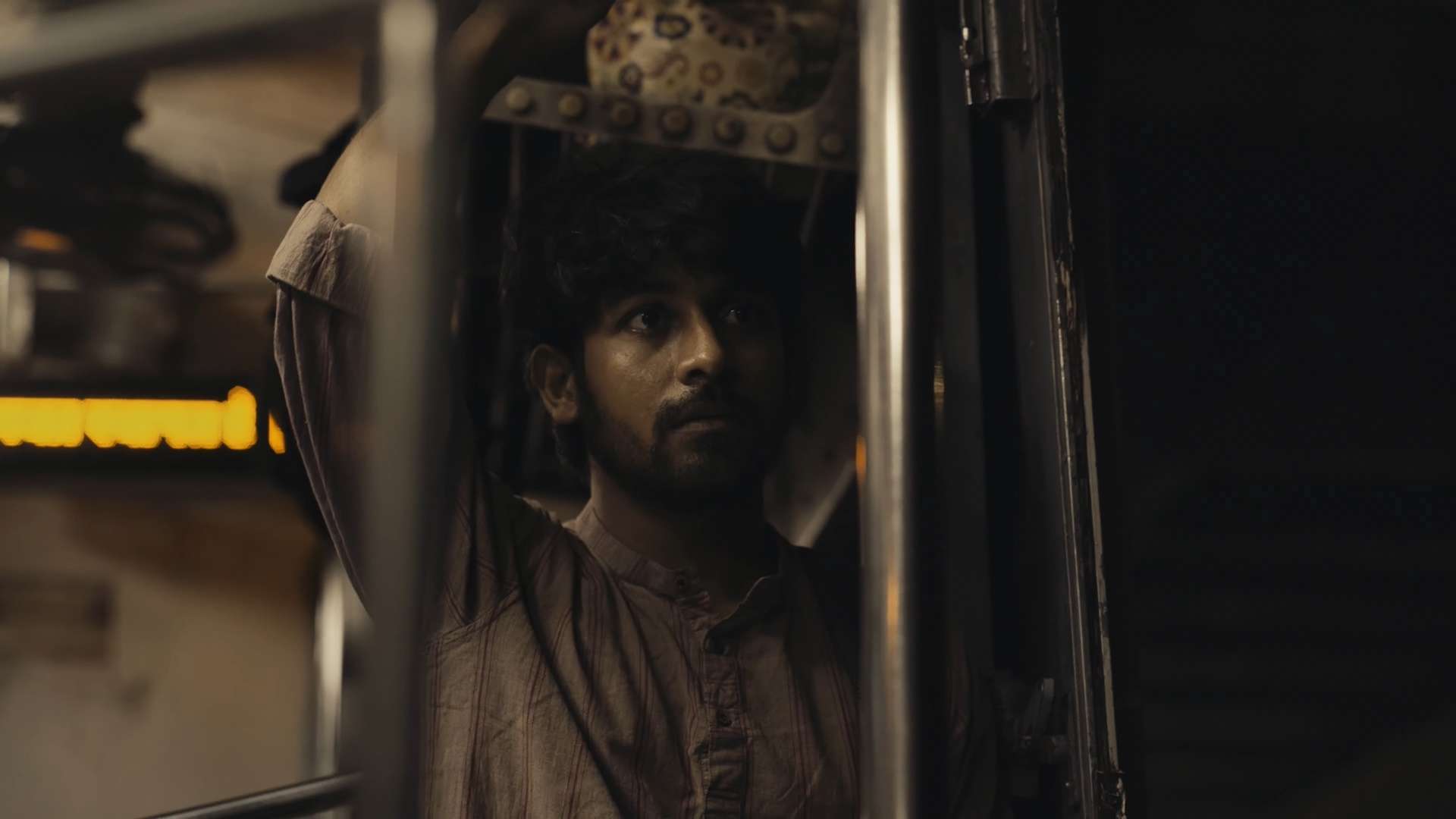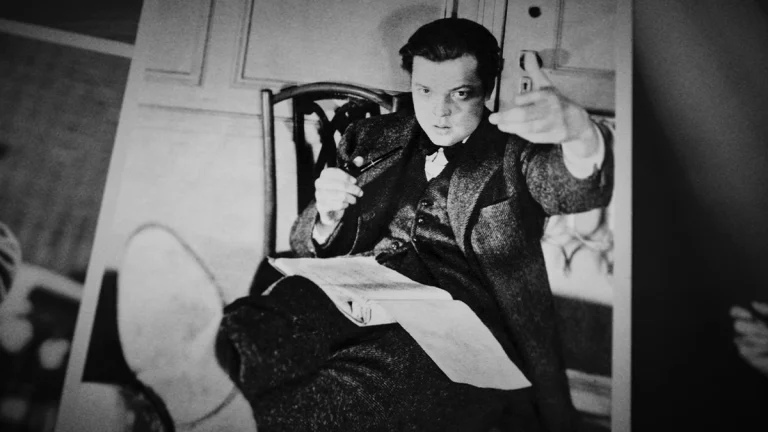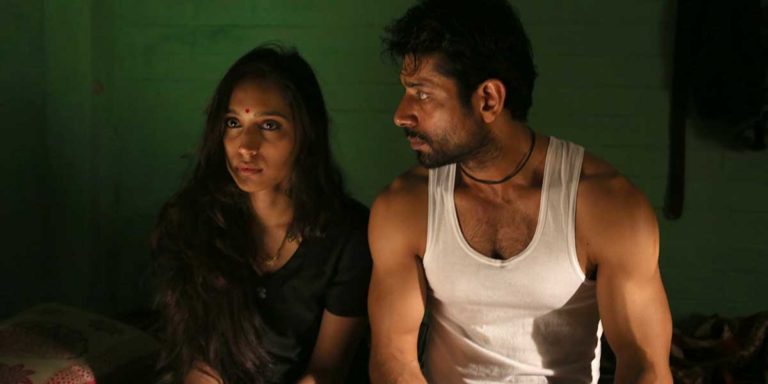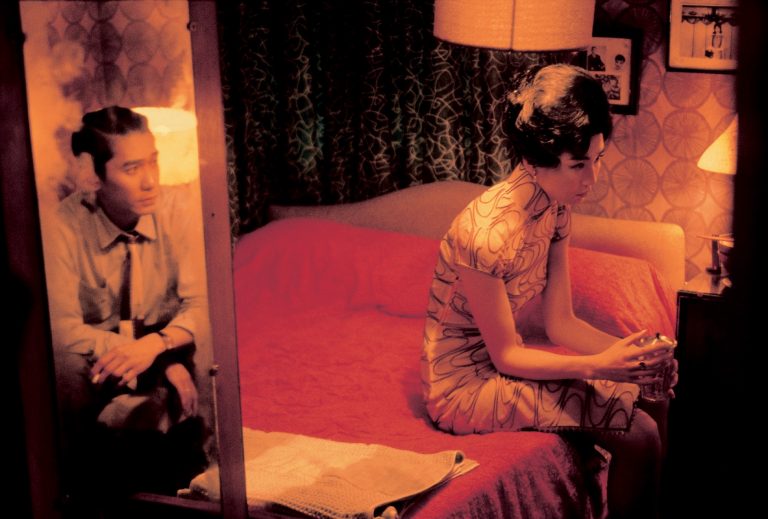‘A Ride in the Rain’ was part of the short film category screened at the 29th Kolkata International Film Festival, 2023. The film deals with what it means to be in a world coded with symbols, signs, and messages. Part of the fascination comes from following the narrative’s two significant characters who are visually impaired, and the other comes from the way the film uses its own narrative to make sense of the symbols, codes, signs, and messages around us.
Utsab Ray, the film’s director, has found a way to explore the subjectivities of different people in different socio-political contexts and create minimal drama out of it. It tells a story that many feature films cannot do in their feature-length runtime; it lingers on metaphors, which is so subtle and expresses a longing for the characters in a beautiful yet tragic way. The film offers a lot to the viewers, essentially making us think about our own reality and the human condition in general.
‘A Ride in the Rain’ is not concerned with an overall message, nor is it an exercise in pure style. Short films often tend to become dull and repetitive because of their structural limitations—they either become a site to show style or aesthetic purity or concern themselves with delivering a message. ‘A Ride in the Rain’ is different; it is concerned with a moment intersecting many lives in a taxi ride on a rainy night in the Kolkata metropolis. It tells the story of this moment of intersection: a migrant Bihari taxi driver who is searching for a better life; a young man who is a writer and a young girl who is a performer, both of them being visually impaired; and the other, a businessman, who thinks of himself as rich, a drunkard.
In turn, this moment creates so many emotions for us viewers that, by the end of it, we are curious to know what these characters are and want to follow them. This is the high point for me in this film. Within its short duration, ‘A Ride in the Rain’ talks about what it means for the characters to be alive, make choices, and keep living. The actors who have played the characters have done a superb job delivering quiet gestures and lending themselves to the environment. Even the rich drunkard—the film makes a drama out of this character— with his peculiarities and unjustifiable behavior toward the other characters, is a highlight of the story.

‘A Ride in the Rain’ couldn’t have been so impactful without its marvelous noirish cinematography; it has the look and feel of an old film—reminiscent of a different, old Kolkata, not full of LED lights or white lights. The ambiance, the rain, and its effect on the screen—it’s visceral. It not only helps create the images and tell the story through them but also makes us aware of the surroundings and their absences through the images – all thanks to the film’s cinematographer, Debraj Naiya, who is a filmmaker himself and a lens collector. The city plays a major role here. Kolkata has been a perennial part of cinema that’s often been exploited for nostalgia.
‘A Ride in the Rain’ is about the present and what it means to be outside the social and historical hierarchy, even the biological hierarchy—the film deals with the present and the experience of living today. The film’s cinematography visualizes the city in this way. Moreover, overall tone and themes have been deftly explored with images. One could not help but get reminded of the classic film “Taxi Driver” (1976, Martin Scorsese)—in addition to whatever the story is, Taxi Driver is one of the best films to visually explore loneliness and moral ambiguity—in a small way as Utsab’s film has a similar story point of morally ambiguous choice to be taken by a character in the film’s final act.
While discussing the film’s images, we also have to talk about the editing—how it has been put together and its rhythm. Rohit Gharami, the film’s editor, found a very subtle way to go back and forth between the images and the narrative; the transitions are so smooth, and the impact is extraordinary. Take the film’s last scene: a montage follows some collected moments from the narrative.
We, the viewers, know it’s the end, but the film keeps on reminding us of the things unsaid and the absences. While there are many themes in this film, one key takeaway is what one should be, even though the system, the social environment, and the power are crushing everyone down. The choices that we make should be reflective; the things that are left unsaid should not be a sign of pessimism but of hope; life is something between said and unsaid.





![Building a Bridge [2021]: ‘Tribeca’ Review – A priest advocates for LGBT acceptance](https://79468c92.delivery.rocketcdn.me/wp-content/uploads/2021/06/Building-a-Bridge-Tribeca-highonfilms-1-768x432.png)
![Pompei (Pompéi) [2019]: ‘TIFF’ Review – A Visual-Stunning yet Empty Allegory on Loneliness and Escapism](https://79468c92.delivery.rocketcdn.me/wp-content/uploads/2019/09/Pompei-Pompéi-highonfilms1-768x384.jpg)
![I Didn’t See You There [2022]: ‘Sundance’ Review – POV: To Be Stared At And Not Be Seen](https://79468c92.delivery.rocketcdn.me/wp-content/uploads/2022/01/I-didnt-see-you-there-2022-768x432.jpg)